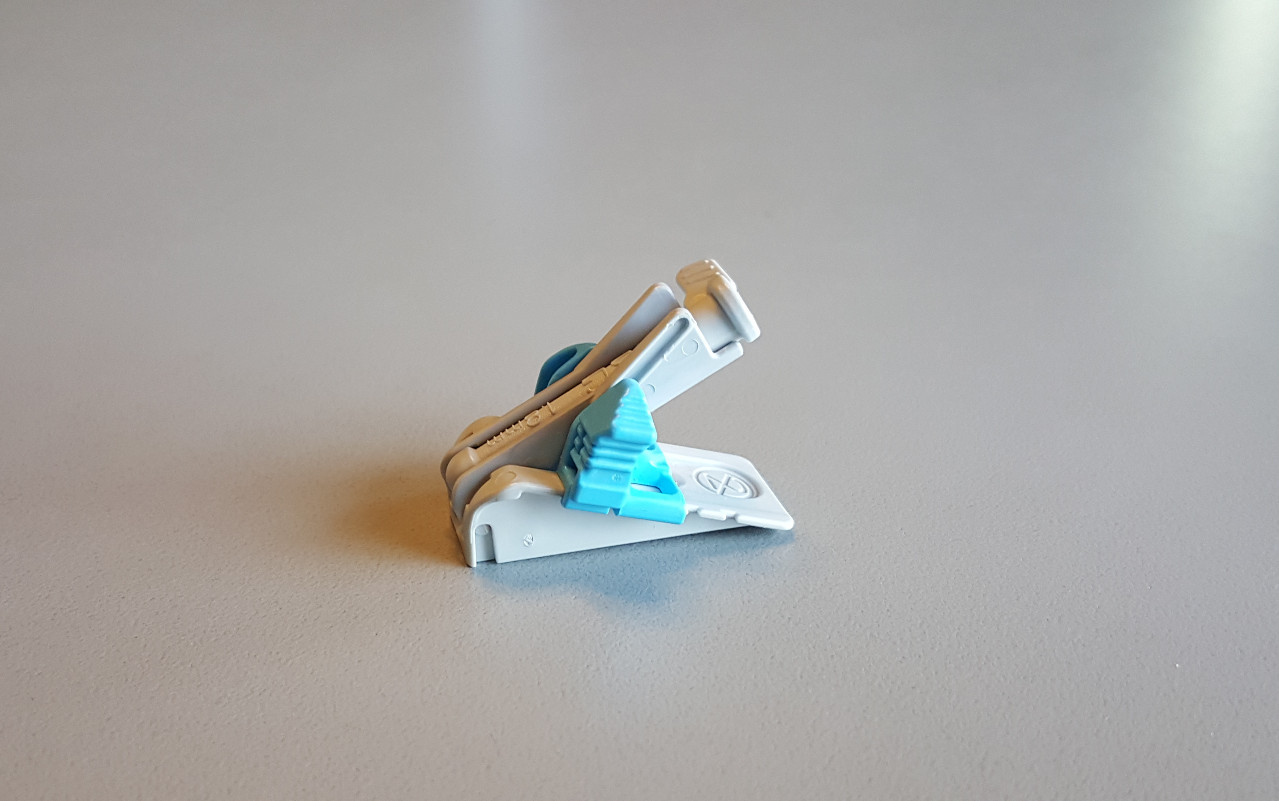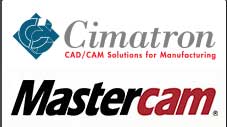Overmolding involves an injection molding technique that is used to mold a plastic component (commonly, a rubbery plastic called TPE), over another component (substrate). The substrate can be an injection-molded part or other material. Overmolding has many applications in a variety of industries. Here are some examples of overmolding:
- Grips– In general, components with handles need something that helps the operator to maintain grip. Overmolded grips provide a safer grip for operators, especially when wet.
- Vibration dampening– Rubber bumpers and mounts protect electronic components from vibrations.
- Comfort– The grip material can be shaped in any way, as it is overmolded by injection. This makes it ideal for ergonomics.
- Sealing Overmolding is a technique that can be used to create a water-resistant seal on electronic devices and other devices.
- Sound absorption– Similar to vibration dampening sound waves can also be absorbed using overmolding.
Designing for Overmolding
Overmolding design can be challenging. It is important to ensure that your part is designed correctly for the overmolding procedure. Understanding the function of a part is the first step in the design process. Here are some questions you should ask yourself upfront.
- What is the purpose of your part? Because overmolding has many applications, it’s important to know the function of your component. If you are molding a sealing on a case that is water resistant, the seal’s function will likely be most important.
- To what will the part be subjected?– UV light or harsh chemicals may damage certain types of plastic. You can choose materials that are UV-resistant if you know where it will be used and what conditions it will face.
- What is the purpose of overmolding?– You may be adding TPE to a handle for ergonomics, comfort or vibration dampening. This question will help you determine which material best suits your needs. You may, for example, choose one of the many grades of TPE to provide a good grip in a wet environment and another grade to dampen vibrations.
- What is the production requirement over time? Part design factors such as wall thickness can influence cycle times, and piece prices. A high-vibration-absorbing grip is an example. The TPE can be thicker for better vibration absorption but this may result in a longer cycle. It could cost a lot in the long run to add material and increase cycle time, but it may be worth it for a smaller volume application.
After you have a clear understanding of the function of the part, you should look at its design to ensure that it is optimized for the manufacturing processes. Design considerations also include wall thickness, gate placement, shrinkage, sealing features, mechanical interlocking features and other design features.
- Wall Thickness: As with any injection-molded part, wall thickness should be uniform throughout. Avoid thick areas. Even plastic flow is created by a consistent wall thickness. Plastic that is too thick can lead to shrink marks and voids
- Gate Location – Plastic must be able to reach the desired part from the molding machine. A small mark can be left on the part when the plastic is injected (at the gate). It’s important to plan ahead for cosmetic parts.
- Sealing Features: The mold should seal properly against the substrate surface to achieve clean edges. Overmold tooling can be designed to have some interference if the substrate is made of plastic. This will compress the material and create a seal.
- Shrinkage – The overmold, like any plastic, will shrink according to the specifications of the manufacturer and the part design. It is important to ensure that the overmold doesn’t shrink away from its substrate, as there will be more shrinkage with thicker walls.
Overmolding Materials
You should now have a set of parameters to guide your material selection. Material selection can be difficult because there are literally thousands to choose from and that new materials are being developed almost every week. When we evaluate a new project for overmolding, we consult our suppliers to ensure we have the right materials.
Many plastics manufacturers employ application engineers who evaluate every application and keep up with the latest technological developments. It is not a good idea to ignore their expertise and experience. Likewise, we also want to know some general aspects of material selection like adhesion. We want to understand the material properties like friction and hardness.
The substrate as well as the overmold should be taken into consideration when selecting the material. TPE plastic is available in a variety of variations, based on its physical properties such as elasticity and rigidity as well as the ability to adhere to another plastic. One TPE may “feel” similar to another, but not adhere as well to polypropylene. Consider these factors:
- Bonding– Some materials will bond when overmolded and others won’t. Although a complete bond may be ideal, it is not always required. Mechanical features such as undercuts or indents are a good alternative if the materials cannot bond together.
- Temperature — Since you’re molding plastic over plastic in the injection molding process, the substrate cannot deform due to the heat or pressure.
For applications that require specific functions (such as vibration absorption and grip), material properties are crucial. There are several properties that are important for overmolding materials made of TPE:
- Tensile related properties – Most datasheets will include several properties related to tensile strength (elongation), tensile modu, etc. Tensile properties describe how the material behaves when stretched. This property is important if your project calls for the overmolded parts to stretch and return correctly. Also, you will want to consider the gate and the direction in which the plastic flows. The tensile strength of the material could differ dramatically depending on whether it is flowing with or against the flow.
- Compression properties– Because TPE plastics tend to be used more often because of their flexibility it is important for you project to know how much the component can be compressed before permanent damage occurs.
- Friction coefficient – Friction is a measure of the force required to move a surface from one side to another. The coefficient of friction is different for each type of TPE. Surface texture is another factor.
- Hardness– The ability of a material to resist being indented is the hardness property. Different scales are used because the hardness of materials can differ so dramatically (think TPE and hardened steel). Compare two materials on the same scale. The “hardness” is often associated with the feel of TPE plastic, but adding the flexural module gives you the complete picture.
- Modulus Flexural– The flexural modulus is a measure of a material’s resistance against bending. This property is second in the “feeling” of TPE and should be taken into consideration for grip features.
- Material Thicken– From the perspective of design, the thickness will affect the performance of material properties. TPE with a thicker wall will absorb more vibrations and feel softer. A thin TPE wall will reduce the material’s vibration-absorbing ability.
Overmolding Operation
In general, overmolding is similar to injection molding, but the plastic is molded on top of another component. The main difference is in the operation. The substrate is loaded in the mold at each cycle with overmolding. Overmolding can be divided into two types based on how the substrate is loaded.
1. Manual Molding
Manually, the substrate can be injection molded using a traditional injection-molding process. Substrates are manually loaded into a second mold to perform the overmolding process. The operator will also remove and inspect the part after it has been removed from the mold. Overmolding low- to medium-volume parts is usually done by hand.
Manual overmolding has the advantage of simplicity. Tooling for both the substrate and the overmold are simple (compared to two-shot tools) and no additional equipment is required. The downside of this method is the need for additional labor and the potential for inconsistent cycle time created by operators. The labor required to fulfill an increasing number of orders can justify investing in automated systems or two-shot molding operations.
2. Two-Shot molding
Advanced injection molding machines are capable of running two polymers simultaneously. The two-shot process uses robotics and a complex mold to form the substrate from one side, then transfer it onto the other. Every cycle is the same. This process may require a more sophisticated injection molding machine and a mold, but could result in a lower price per piece compared to manual operation.
The decision between the two molding processes is made on a case-by-case basis. It is not possible to determine when an automated overmolding is justified. In order to provide the best solution for the end user, injection molding companies will consider several factors, including: labor allocations, annual orders quantities, budgets, material usages, cycle times, etc.
Overmolding vs. Insert Molding
Both insert molding and overmolding use the injection molding technique to mold plastic around a component. Overmolding involves the molding of a rubbery plastic on top of a plastic component. Insert molding involves the molding plastic around an object that is not plastic.


